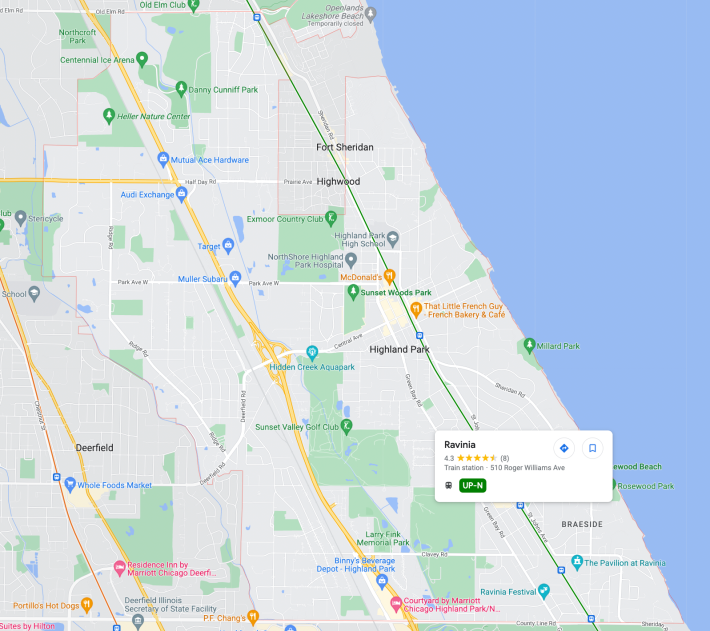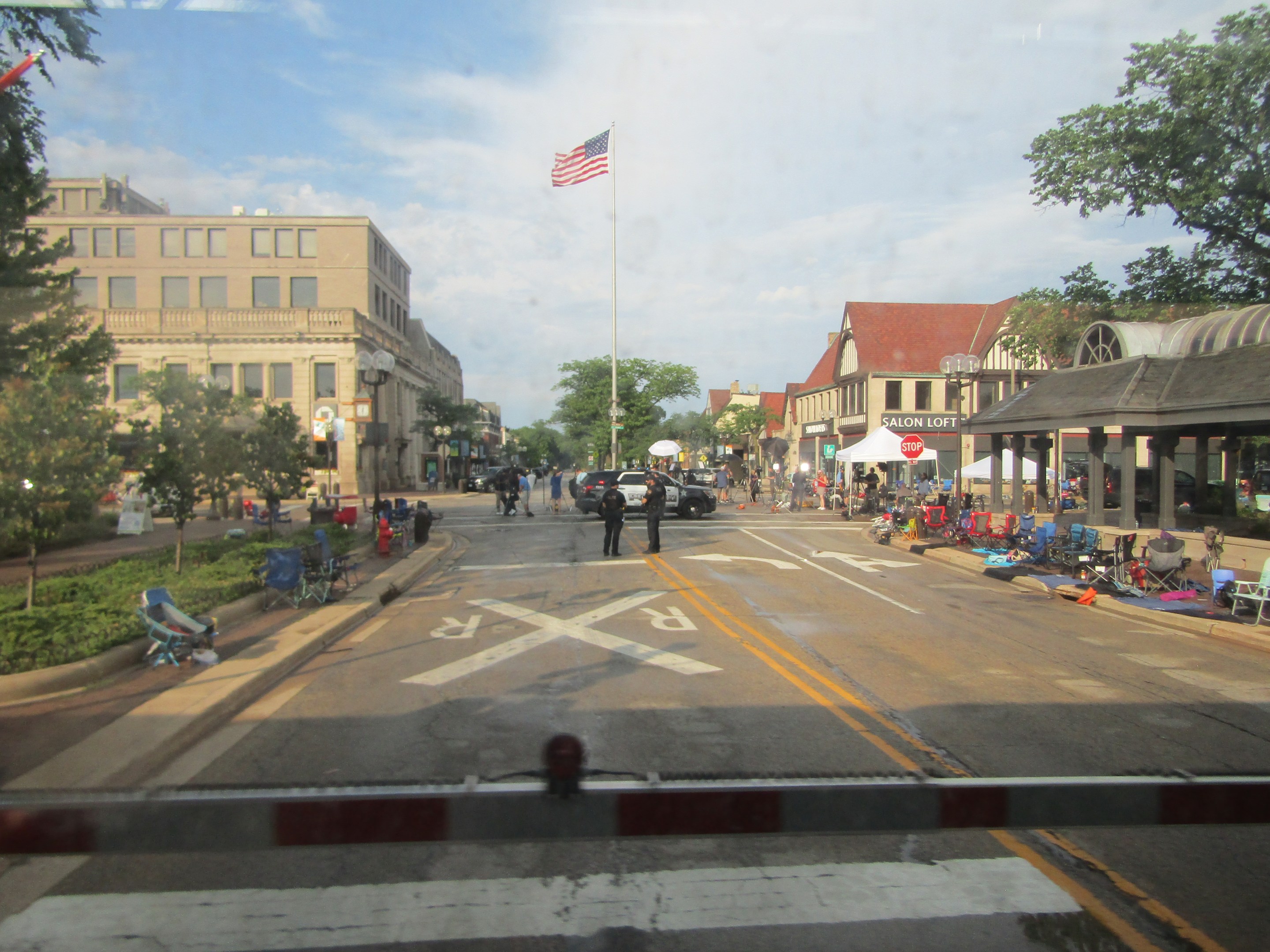Tragically, in recent weeks we've seen mass shootings motivated by racial hatred, political differences, mental illness, or all of the above, in diverse parts of the U.S. such as Buffalo, New York; Uvalde, Texas; and Laguna Woods, California.
Sadly, Chicago regularly sees mass shootings as a result of interpersonal conflicts or gang rivalries. An incident where a teen and four adults were wounded early Monday morning two blocks south of the King Drive Green Line station in the low-income Parkway Gardens neighborhood may fit that category.
But the mass killing later that day at the Fourth of July parade in Highland Park, an affluent North Shore suburb, is further evidence that our nation's failure to get the gun violence epidemic under control is a threat to people from all walks of life. Hopefully this tragic event will help inspire the passage of federal gun control legislation, such as universal background checks and assault weapons bans, to keep Americans of all backgrounds and income levels safer.
Since Streetsblog Chicago's news lens is sustainable transportation, we asked contributor Igor Studenkov, who was heading to Highland Park yesterday on behalf of another news outlet, to report on what riding transit in the northern suburbs was like on that tragic day. - John Greenfield, co-editor
The aftermath of the July 4 shooting in downtown Highland Park disrupted Union Pacific North Metra line service for hours, with service not fully restored until the suspect, 22-year-old Robert “Bobby” Crimo III was arrested.
Crimo allegedly fired at Independence Day Parade marchers from the rooftop of the Ross Cosmetics building at the corner of Central Avenue and 2nd Street, about three blocks northwest of the of the downtown Highland Park Metra station. Five people were pronounced dead at the scene, and two people subsequently died at a hospital. 38 people were injured, although most of them were released from hospitals after being treated for their injuries.
As law enforcement personnel tried to contain the crime scene, Metra trains were stopped just short of downtown, then got turned around. For four hours, there was no service north of Highland Park's Ravinia station, and when service was restored at 4:00 p.m., the trains bypassed downtown. However, around 7:00 p.m., after Crimo was arrested, service was fully restored.
I’m not entirely a stranger to Highland Park – I covered the city and some of the other nearby suburbs (mostly the other suburbs) for 22nd Century Media. I’ve passed by the spot where Crimo allegedly spilled blood many times. I already had a weekend pass, and I ended up taking Metra after 4:00 p.m.
The snarled logistics
The Union Pacific North line runs between Chicago and Kenosha, Wisconsin, although only a handful of train actually serve the full length of the line, with most weekend trains only going as far as Waukegan, Illinois, the last major city before the border. During major federal holidays, Metra runs on a Sunday schedule, with the UP-N line only running nine trains in each direction.
The line has four stations in Highland Park – the eponymous downtown station, the Ravinia and Braeside stations serving the neighborhoods further south, and Ravinia Park station, which serves the Ravinia Festival outdoor concert venue when it’s open during the summer. (Yes, it's confusing that the Ravinia station is not located at the Ravinia venue.)

On most days, the Highland Park station is something of a local transit hub. Pace bus routes 213, 471 and 472 stop right next to the outbound platform, providing convenient transfers for passengers using the outbound trains. Route 213 largely parallels the line as far south as the CTA's Howard ‘L’ station, while Route 472 parallels the line as far north as the Ford Sheridan stop. Route 471 serves the section of Highland Park west of the railroad tracks and the the Deerfield and Northbrook communities further south. None of those bus routes run on Sundays and major federal holidays.
As law enforcement scrambled to respond to the shooting, outbound train 807, which left Chicago at 10:35 a.m., and inbound Train 814, which was scheduled to arrive in Chicago at 12:30 p.m., were stopped near downtown Highland Park. By 12:38 p.m., Train 807 dropped off its passengers at the Ravinia station and headed back to Chicago. Train 814 was similarly stopped at the Highwood station, the first station north of Highland Park,
Over the next hour, none of the other scheduled trains ran, with Metra recommending riders use the Milwaukee District North Line, which partially parallels the Union Pacific North line, instead. Eventually, Metra did run some UP-N trains as far as the Ravinia station, but didn’t run any trains north of Highland Park.
Watching these service interruptions unfold on Twitter, it occurred to me that, if this had happened on a weekday or or Saturday, Pace might have been able to provide connecting service by rerouting Routes 213 and 472 away from Highland Park. But, as things stood, riders from north of Highland Park had to figure out their own way to reach their destinations, and anyone who had to get north of Ravenia wasn’t much better off.
At around 3:30 p.m., Metra announced that through service would resume after 4:00 p.m. The trains would skip the Highland Park station, and because they would have to slow down, Metra warned that there would be delays.
Riding Past Highland Park
I took outbound Union Pacific North Train 419, which would normally be the second outbound train to serve Kenosha, leaving the Ogilvie Transportation Center in downtown Chicago at 4:35 p.m. My plan was to take it as far as the Lake Forest station (Lake Forest is another North Shore suburb about 7 miles north of Highland Park where Crimo was later apprehended), switch to the inbound Train 822, which would normally run express to Highland Park, disembark at Ravinia and maybe walk toward downtown, 1.5 miles away. Given the delays Metra mentioned, I was prepared to change plans on the fly.
On my outbound trip, a minor track fire at Evanston’s Davis Street station platform delayed the train by about 15-17 minutes. Still, I was able to switch trains with a few minutes to spare.
Both on the way to Lake Forest and on the way back, I was struck by how still downtown Highland Park looked. By that point, social media was filled photos of folding chairs and other furniture that got left behind as people ran, but seeing it all lined up, even if from the window of a moving train, was something else entirely. When my inbound train crossed Central Avenue, the police were still there blocking traffic. There was no one on the street except the cops, and the parking lots were strangely empty.

When I disembarked at Ravinia, the first thing that stuck me was how eerily quiet it was. Most of the businesses would have been closed anyway, but at first, I didn’t see anyone walking around at all – just cars passing by. The stillness was only interrupted by a whirl of the helicopters overhead and the sirens blaring at the distance.
I was reminded of the time I visited Ravinia during the height of the pandemic. There was the same quiet stillness, and the same lack of people.
I abandoned any thought of walking downtown because I was worried that I wouldn’t be able to make the next inbound train. That would mean I'd have to wait for the final inbound train of the night, which wouldn’t get there until 10:37 p.m.
But as I walked around, the helicopters stopped flying, and I saw more and more people walking around. Just a handful of dog walkers here and there, and a family walking home. But as time wore on, I saw more and more people. By the time Metra announced that the service would be restored, I saw a couple taking their toddler out for a walk before they went to see the arriving inbound train.
As I’m writing this, Pace hasn’t announced whether it would make any changes in light of the tragedy. I assume that its service would be up and running. Even amid death and trauma, people still have places to get, and public transit will, hopefully, still be there to serve them.





